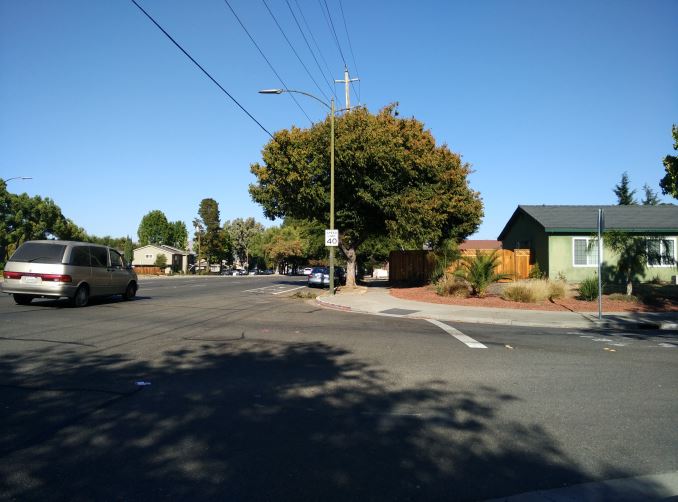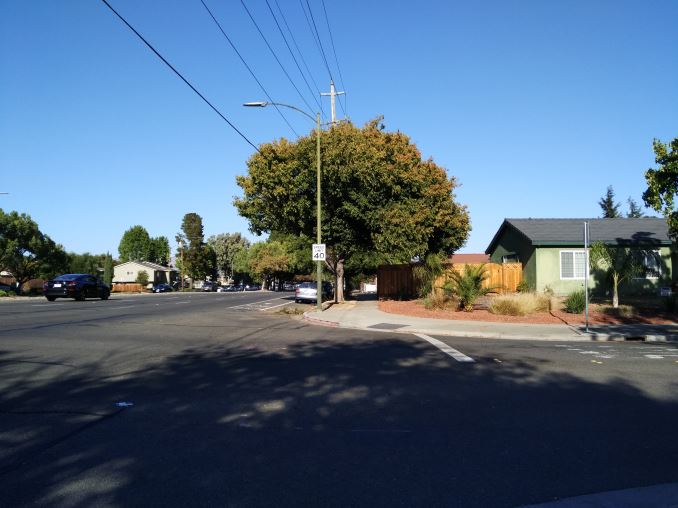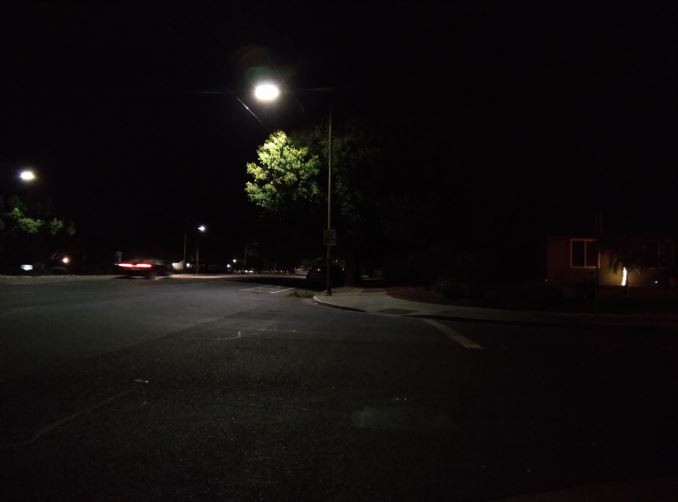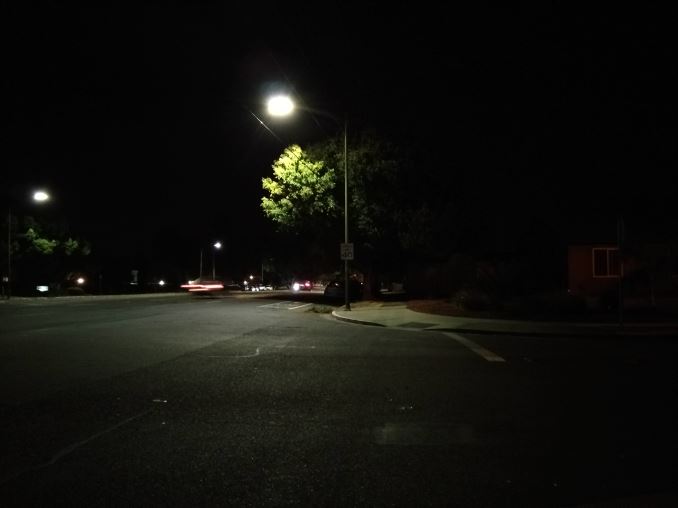The Xiaomi Mi Note Pro and Mi Note Review
by Joshua Ho on September 11, 2015 9:00 AM ESTStill Image Performance
Now that we’ve discussed some of the basic aspects of the camera system in the Xiaomi Mi Note line, we can begin to look at how this all translates to real-world camera performance. In order to do this, we run our standard suite of camera tests which should give a good feel for what camera performance is like when variables such as hand shake and inconsistent camera positioning are removed from the equation.
Xiaomi Mi Note
Xiaomi Mi Note Pro
Our first test is the ISO chart test, which is designed to provide an absolute test of peak spatial detail. This is a controlled lighting test, which should help to reduce potential confounding factors. In the case of the Xiaomi Mi Note line, we can actually see the difference in detail compared to the Galaxy S6 as the Mi Note appears to retain much more detail along the edges of the photo relative to the Galaxy S6 and other smartphones with larger sensors and wider apertures. Detail at the center of the photo is also strongly retained but it seems Xiaomi might be sharpening a bit aggressively as the circle in the center is rather jagged instead of smooth and round. Both horizontal and vertical detail is well retained though, all the way up to the 20 line mark. We can also see some evidence of haloing around the high contrast detail, which is rather distracting and is indicative of strong sharpening effects.
Mi Note
Mi Note Pro
In this basic daytime landscape shot we can see a few potential problems already with the Mi Note camera processing. Although the details are mostly correct, looking at the trees in the distance it's quite obvious that noise suppression is strongly suppressing fine details in order to try and make sure images don't have any noise. The tree in the center of the frame has this strange effect where details inside of the leaves are mostly smudged away but the edges have very high contrast, which creates an odd effect and suggests artificial sharpening. The Mi Note also clearly has far too aggressive noise reduction here as it basically looks like the Mi Note Pro photo but with an AA filter applied. However, for the most part that's all that I have to criticize here. Given that a number of flagship smartphones have shipped with shockingly poor post-processing even in daytime scenes, I'm impressed by how the Mi Note and Mi Note Pro give at least respectable results here.
Mi Note
Mi Note Pro
In low light we really start to see the weaknesses of the Mi Note Pro and Mi Note. Despite the use of OIS, both devices are underexposing significantly and there's just far too much luminance noise reduction going on here. However, once again, that's all the real criticism I have for these phones. Obviously, something like the Galaxy S6 shows far more detail and better exposure in this scene, but there are significant purple hues present in areas that should be black instead of purple, and when looking closely at the Galaxy S6 photo the severe sharpening effects really make it a bit unnatural and gritty. The iPhone 6 Plus is the winner here by virtue of larger pixel size and a lot of software magic to hide the 1/4 second exposure so moving cars appear to be relatively sharp instead of a complete blur, but Xiaomi could easily be in the race for best smartphone camera within a single product cycle of work.
Overall, the Xiaomi Mi Note camera isn't amazing, but it's far from terrible. In daytime situations photo quality is actually already very good, but with some minor post-processing issues that could be resolved with a single OTA update. At night time, with some processing improvements and perhaps higher sensor gain the Mi Note line could start to be compared to the iPhone as well. This doesn't sound all that impressive, but it really is because this is the first phone in this price point where I can even begin to compare the camera to flagship smartphones.


































94 Comments
View All Comments
hans_ober - Friday, September 11, 2015 - link
Still no update on the MotoG 2015 charge time using a powerful charger... seriously?wliles3 - Friday, September 11, 2015 - link
Please Review The Note 5 And Edge Plus.AussieinUS - Friday, September 11, 2015 - link
Thanks for a detailed review. I have the Note for 6 months now and use it on Tmobile in the US (no LTE) and Vodafone in Italy. It works very well. The review mirrors my experience down to the slippery and now cracked glass back. The advice on a cover came too late. My biggest challenge has not been the battery, the good camera, the video playback, or the google play services. It has been trying to get the change to the Mi Account for the auto sign in. It wants to use my now defunct Italian number and not the new number. It constantly tries to sign in. I have changed the browser based credentials for Mi Account but it cannot be accessed from the mobile. Claims by Xiaomi that they will get back to me within 3 days based on a "lost password" on the device results in nothing. It still works but is constantly trying to signin. This speaks to tech support away from the mothership. Thanks for this review and the constructive comments.eriri-el - Friday, September 11, 2015 - link
I have a slight beef here regarding fast charge support. I own the Mi Note (non-Pro) and its charging time is more or less in line with what is shown in this review. But as for it not supporting fast charging, my Mi Note came bundled with the MDY-03-EB charger which is rated for 5V/2A as well as 9V/1.2A. According to the Qualcomm website on Quick Charge, both the charger and the Mi Note is certified for Quick Charge 2.0. given that it "just" supports 9V/1.2A, I think it doesn't charge that fast, but that doesn't mean it doesn't support QC, unless of course Qualcomm is lying to us.eriri-el - Friday, September 11, 2015 - link
Reference: https://www.qualcomm.com/documents/quick-charge-de...Xiaomi is at the bottom of the list in the pdf file
extide - Saturday, September 12, 2015 - link
It seems the hardware is definitely there for the support, but they may have disabled it as a way to differentiate between it and the Pro. Kind of an odd thing to do, but oh well.Peichen - Friday, September 11, 2015 - link
The best selling Android phones have always been those that look and feels like an iPhone except cheaper and with dual-SIM and SD card. It is no wonder the Biggest and 2nd biggest Android OEMs releases phones that's basically iPhone 6.5As for Mi Note. I like it but feel $470 is getting too expensive for a phone that's not spectacular. $400 for the Pro model would be more app.
babadivad - Friday, September 11, 2015 - link
How do you guys get the close ups of the screens like that? I want to try that with my phone. I've always thought that was so cool. It was one of the reasons I stayed around with you guys since the launch of the Note 2. I like the thorough way you do the phone reviews and the close up on screens to check for changes to sub-pixel placement and changes from year to year of the same line. So cool.edwpang - Friday, September 11, 2015 - link
This review leaved out a very important area: call quality and data support. I am not keen on LTE. I am fine as long as I can use 3G on my Rogers network.melgross - Friday, September 11, 2015 - link
Another Chinese government supported company. It would be nice if web sites reviewing these devices from Chinese companies did a bit of research as why their prices are where they are